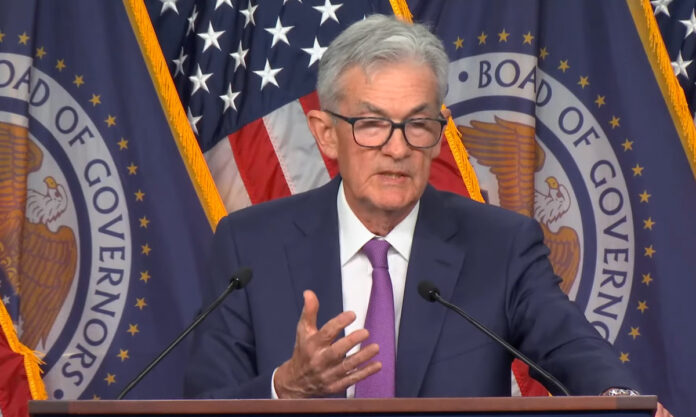The Federal Reserve continues to monitor the economy, from inflation to jobs, production and wages, and in the FOMC’s recent May meeting opted again to hold rates in lieu of more information.
The committee’s ultimate goal is to reduce inflation from its current rate above 3 percent to 2 percent without pulling the economy into recession, something it’s been able to do to this point.
“In support of its goals, the committee decided to maintain the target range for the federal funds rate at 5.25 to 5.5 percent. In considering any adjustments to the target range for the federal funds rate, the committee will carefully assess incoming data, the evolving outlook, and the balance of risks. The committee does not expect it will be appropriate to reduce the target range until it has gained greater confidence that inflation is moving sustainably toward 2 percent.”
Inflation at its highest in the recent economic cycle was above 9 percent. The committee will meet again June 11-12.
Along with interest rates, the Fed uses a less blunt tool — its balance sheet — to influence the growth or cooling of the economy. On the heels of the COVID pandemic, the Fed increased activity in the bond market to help boost the economy, and now says it will ease what many economists call “quantitative easing.” Rather than cap purchases at $60 billion per month as it has been, the Fed will begin to cap at $25 billion in June.
What Factors Does the Fed Consider?
Though growth in gross domestic product has moderated from 3.4 at the end of 2023 to 1.6 percent during the first three months of 2024, the Fed continues to dive deeper in assessing private domestic final purchases that exclude inventory investment, government spending, and net exports. The committee has expressed that it feels closer-to-home-measure is a better indicator of cost pressure. That measure came in at 3.1 in the first quarter, unchanged from mid 2023.
Production
“Consumer spending has been robust over the past several quarters, even as high interest rates have weighed on housing and equipment investment,” Fed Chair Jerome Powell said in his post meeting comments. “Improving supply conditions have supported resilient demand and the strong performance of the U.S. economy over the past year.”
Powell said, given the conditions, it is unlikely to raise rates again and likely will begin to cut mid-year if the indicators remain stable.
The ISM Non-Manufacturing (services-focused) Index dropped to 49.9 in April, when analysts expected it would land at 52. A drop below 50 means a contraction in business. The ISM Manufacturing Index also showed contraction, dropping from above 50 for one month back down to 42.9 in April.
Labor
The jobs market continues to be stable, if waning, which is what the Fed wants to see; just more of it. Non-farm payrolls came in with an increase of 175,000 in April against the consensus expectation of 240,000 jobs, no small difference. Unemployment ticked up a 10th to 3.9 percent year-over-year. Regular take-home pay rose 0.2 percent and is up 3.9 percent in 12 months.
Home Sales
New single-family homes sales rose 8.8 percent in March, beating the consensus, and was up 8.3 year-over year.
The median price of new homes sold was $430,700 in March, down 1.9 percent from a year ago, First Trust Chief Economist Brian Wesbury stated in a newsletter to subscribers. The average price of new homes sold was $524,800, up 1 percent compared with last year.
“New home sales came in stronger than expected in March, driven by broad-based gains as more inventories give buyers a greater number of options to choose from. Notably, the 8.8 percent gain in March was the largest in more than a year,” Wesbury stated. “It looks like the upward trend in new home sales that began in 2022 as the economy reopened is still intact, though volatility in interest rates continues to play an outsized role.”
Likewise, the Manufactured Housing Institute this month reported an uptick in home shipments from March. The industry shipped 8,464 new homes in March, up 1.1 percent from the previous month and up 10.5 percent in 12 months.
MHInsider is the leader in manufactured housing news and is a product of MHVillage, the top place to buy, sell, or rent a manufactured or mobile home.













